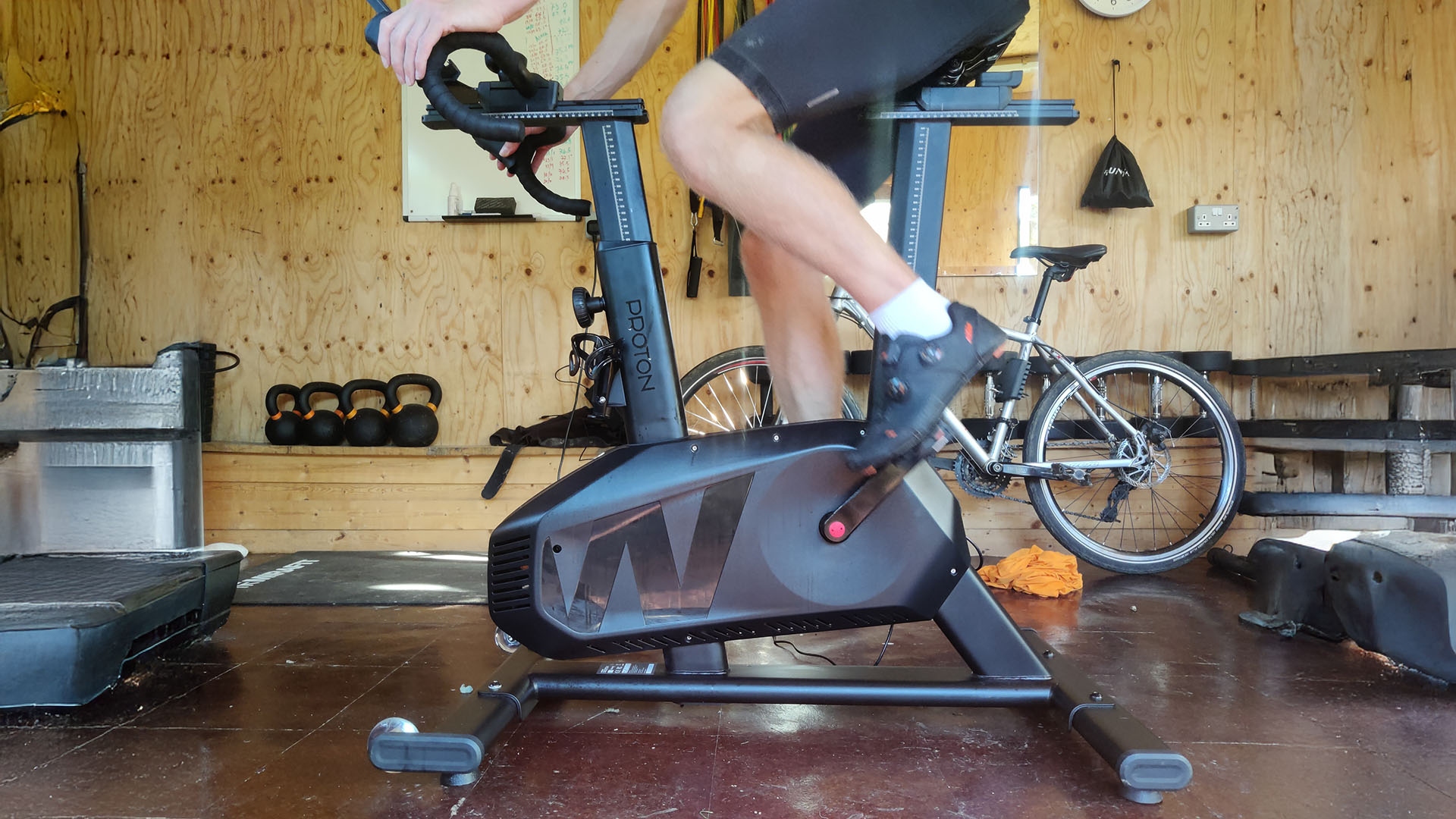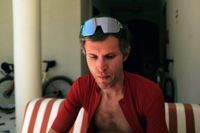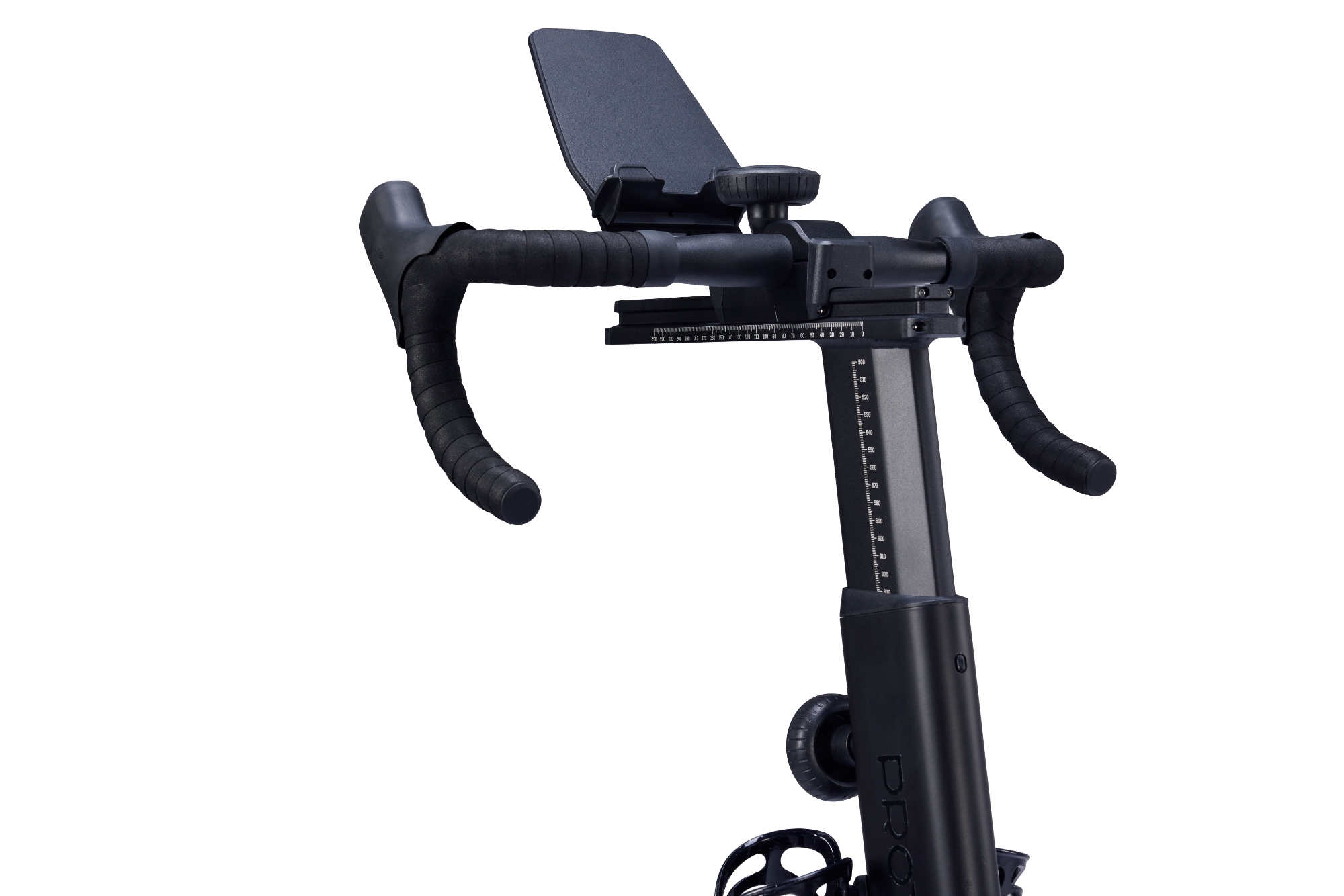Wattbike Proton review: striking a balance between functionality, practicality and price
Easy to set up with plenty of adjustability but it's not without its imperfections

The Wattbike Proton ticks all the boxes for anyone looking for a smart-bike that offers value without compromising on essential features. Provided you're willing to overlook a few imperfections, it strikes a balance between functionality and practicality. While it lacks the tactile precision of more expensive smart bikes and has some quirks with gear shifting and erg mode responsiveness, its overall build quality, connectivity, and value for money stand out. It’s a well-rounded choice for those seeking the versatility and convenience of a ready-to-ride smart-bike without the high price.
-
+
Easy to move and doesn't occupy much space
-
+
Simple setup with seamless app integration
-
+
Tool-less saddle and handlebars adjustment, ideal for multiple users
-
+
Free app with wide range of training sessions suitable for all levels
-
+
Sturdy build with improved durability
-
+
Competitive price point offering good value for money
-
-
Saddle comfort could be better
-
-
Gear change buttons are fiddly with indistinct feedback
-
-
Erg mode responsiveness is laggy
-
-
Noticeable noise and pedal vibration during use
You can trust Cycling Weekly.

Having tested several smart-bikes over the past four years, including Wattbike’s Atom, I was intrigued to hear that the company was launching a new bike pitched to a broader home audience.
Rather than being aimed at hardcore Zwift racers, the Wattbike Proton has been designed to pique interest right across the fitness mass market, including those on a budget (it’s £600 cheaper than the Atom) and some who would otherwise gravitate towards spin classes or Peloton. That said, the Proton can cope with power outputs of up to 1,800 watts – so I knew that my puny sprint wasn’t going to cause it any problems.
I’m neither a fanatical Zwifter nor an indoor novice, so I put the Proton to the test in my usual regime of one or two shed-based sessions and races per week.
Construction
At first glance, the Wattbike Proton looks and feels very sturdy. Despite its hefty build – it weighs 48kg – it's surprisingly easy to move around thanks to integrated wheels. Being easy to wheel around is important if your living space doubles as your gym or, like us, you have a jam-packed shed.
The Proton’s compact design – it’s 20cm shorter than the Atom – makes it suitable for homes (and sheds) where space is at a premium. Aesthetically, it looks like a basic gym bike and as such isn’t exactly easy on the eye – but who cares about that, provided the price is right?

The Proton is relatively compact and easy to move around on its integrated wheels
Adjustability is one of the Proton's strong suits. The saddle (height and fore/aft) and handlebar heights are easy to change simply by turning the large, easily gripped knobs – no tools needed – allowing you to dial in your exact riding position. This feature makes it perfect for households with multiple users, as each person can quickly adjust the bike to their preferred settings. Jumping on the Proton after my vertically challenged brother Matt presented minimal adjustment inconvenience.

Adjustability is quick thanks to the large, easily gripped knobs
Speaking of height differences, the seat height range of 50-83cm is even wider than the Atom’s – you’re unlikely to be too tall or too short for this bike. The standard saddle is not the most comfortable, being on the harder side, though I did get used to it after a few rides. Besides, it would be easy to swap with your preferred saddle.
The latest race content, interviews, features, reviews and expert buying guides, direct to your inbox!
Setup and connectivity
Getting started with the Wattbike Proton is refreshingly simple. The accompanying app guides you through the setup process with ease. Connecting to third-party platforms – our favoured option was Zwift via Apple TV – was seamless too. We used Zwift in conjunction with a wall-mounted TV, but the Proton has a sturdy, versatile tablet holder, if that is your preferred setup.
This Wattbike, like the Atom, supports both Bluetooth and ANT+ connectivity, ensuring compatibility with a wide range of devices and software. We never experienced any problems with getting connected or drop-outs once riding. For those who value hassle-free tech, the Proton delivers.
Ride experience
Once pedalling, the Proton offers a generally smooth ride, albeit with more vibration than more expensive smart-bikes such as the Wahoo Kickr Bike. Similarly, gear changes are not as positive or tactile as on the Wahoo – you don’t feel the shift on the Proton. It's not always obvious when a gear has changed, sometimes requiring multiple presses to confirm – a small but noticeable interruption to the flow of your ride. This is not helped by the means of shifting: squidgy buttons that can be fiddly and hard to locate when you're in the throes of a hectic sprint finish on Zwift.
Using the Proton in erg mode revealed some quirks. When the target power changed, there was a noticeable lag of five to 10 seconds before the bike's resistance adjusted accordingly. It often overshot or undershot the target power before oscillating and slowly settling. This is a problem in reps of less than 30 seconds, when much of the interval is wasted getting to the intended power. It’s not a big enough drawback to hinder the effectiveness of your training, but it can be annoying to those accustomed to greater responsiveness.

David mostly rode Zwift via Apple TV
I tended to use Zwift for my training and racing while using the Proton, simply because I have a Zwift subscription but also because the platform boasts a broader range of sessions than the Wattbike Hub app (which is not available on Apple TV). For those who don’t want a paid subscription, the free Hub app is a significant perk, offering a good spread of sessions and the option to build your own.
When testing the original iteration of the Wattbike Atom back in 2020, I had serious doubts about its accuracy. Recording a sub-40-minute ascent of Alpe du Zwift at over 350 watts all but confirmed it was reading substantially above my actual output. No such concerns (or superhuman numbers) on the Proton. Although I didn’t dual-record to compare its power accuracy, my perceived effort, as well my heart rate, seemed in keeping with the power shown on the screen – I’ve no reason to doubt its claimed accuracy of within 1% either side of spot-on.
Noise and vibration
The Proton isn’t obtrusively noisy but it isn't the quietest trainer on the market – I found myself turning up my music louder than usually I’d need to. Additionally, there's a noticeable vibration through the pedals, particularly in erg mode. Over longer sessions, this buzz may become more noticeable – a factor worth considering if extended rides are your mainstay.
Durability and longevity
In the past, Wattbikes have had issues with longevity, especially when subjected to heavy use or stored in less-than-ideal conditions like sheds. The Proton, however, seems to address these concerns. Its construction looks and feels robust, and all the delicate electronics are well-enclosed, protecting them from sweat and damp ingress. While only time will tell how the Proton holds up in the long run, the initial impression is positive.
Value
One of the most compelling aspects of the Wattbike Proton is its price. At £1,795, it’s a whopping £1,400 cheaper than the aforementioned Wahoo Kickr Bike, £400 less than the Kickr Bike’s little brother, the Kickr Shift, and £300 less than the Tacx Neo Bike. This more accessible price point makes the Proton an attractive option for those looking to invest in a quality trainer without breaking the bank.
The only significantly cheaper smart-bike currently available is the Zwift Ride. Given the range of features and the seemingly robust build quality, the Proton offers substantial value for money. It's an investment, certainly, but one that delivers a decent indoor cycling experience comparable to higher-priced alternatives.

David Bradford is senior editor of Cycling Weekly's print edition, and has been writing and editing professionally for 20 years. His work has appeared in national newspapers and magazines including the Independent, the Guardian, the Times, the Irish Times, Vice.com and Runner’s World. Alongside his love of cycling, David is a long-distance runner with a marathon personal best of 2hr 28min. Diagnosed with retinitis pigmentosa (RP) in 2006, he also writes personal essays exploring sight loss, place, nature and social history. His essay 'Undertow' was published in the anthology Going to Ground (Little Toller, 2024). Follow on Bluesky: dbfreelance.co.uk